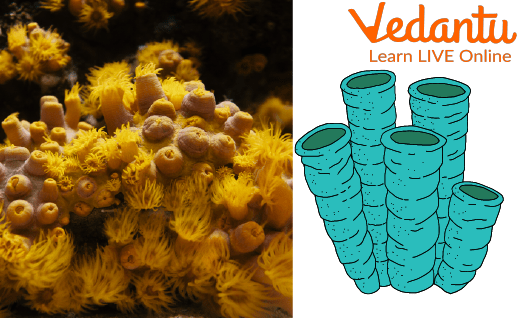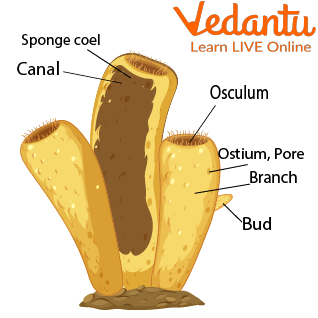




An Introduction to Sponge Fish
Have you ever come across a fish that is stuck to the ocean floor? A fish that does not move around as much as other fish do, perhaps a fish that does not move at all? This amazing fish resembles plants more than it resembles animals. They get their name from their ‘pore-bearing’ structure and are thus called “sponges”
Sponge fish or sponge corals are aquatic animals found in saltwater. They are often found attached to an underwater rock or a coral. Sponge sea animals have some pretty cool features; let’s look into them in some detail in this article.

Sponge Fish
Parts and Functions of a Sponge Fish
It is interesting to note that sponge sea animals are made of cells that are also found in your body. Technically, these cells are a little less developed while the cells we have in our body are more complex, performing more or less the same function. They have a modified skeletal system, muscle cells, immune cells, germ cells for reproduction, and even bone cells.
Sponges have several functions like movement, respiration, reproduction, and coordination of various activities. These species are important for humans as they were used for cleaning before synthetic sponges came into existence. Several antibiotics (medicinal uses) are also produced from sponge fish.

Parts of a Sponge
Where are Sponge Fish found?
Sponges thrive in clean, quiet water like in oceans but at a depth. This is to prevent their pores from being blocked due to ocean currents or mud sediments. They are usually found at a depth, in attachment to firm surfaces like rocks.
They find it difficult to attach themselves to softer surfaces but do so in rare circumstances.
Sponge fish are rarely found in the oceans near the equators; they are more common in the colder oceans which are close to the poles.
Sponges are an important part of the coral reef ecosystems. They help produce important gases for the survival of the coral reef. These are known as sponge corals

Sponge Corals
Interesting Facts about Sponge Fish
Sponges have an open circulatory system. Their circulation depends on the flow of water in and out of the pores present in their body. Sponge fish can reproduce sexually (involving both parents) as well as asexually (either one of the parent). Due to this nature, they are given the fancy name ‘hermaphrodites’.
Their scientific name is ‘Porifera’ which means ‘pore-bearing’. Today’s sponges have a very slow-moving mechanism called ‘cell transportation’ which makes it seem as though they are immovable. Their movement from place to place takes forever! These species live for approximately 2300 years on average!
Summary
Sea sponges or sponge fish are interesting marine creatures often found in quiet, clean waters at a depth. They are found attached to the rocks or any firm surface on the ocean floor.
Today’s sponges obtain their name due to their sponge-like texture, these species have an open circulatory system and simple cells performing functions like respiration, reproduction, movements, digestion, circulation, excretion, etc.
Sponges attached to coral reefs are called coral sponges. These creatures help balance the coral ecosystem by producing necessary gases like oxygen and carbon dioxide for the survival of both the corals as well as the sponges themselves.
FAQs on What are Sponge Fish and Where are they Found?
1. How are sponges useful for humans?
Sponges have a faint skeletal system made of fibre cells. These were often used by Europeans as protection in gloves, helmets, utensils, water tumblers, etc. Before synthetic sponges came into existence, these creatures were processed and used as a cleaning tool, and paint applicators. Today’s sponges have huge amounts of microorganisms present surrounding them and were even used as antibiotics due to their medicinal properties. Recent findings have also shown that sponges can be used to synthesise several other chemical and medicinal products.
2. Why are sponges often confused with plants?
Sponges frequently get mistaken for plants due to their look. They may not possess the digestive system or the central nervous system that other animals do, but they nonetheless have an animal body.
3. What do sponge fish feed on?
Sponge fish are considered carnivorous as they feed on animals, fish, and insects. They feed by a mechanism called ‘phagocytosis’ which means ‘cell-eating’. Small cells surrounding the sponges are engulfed by them through phagocytosis. A special type of sponge fish called “glass sponges” are believed to feed on dissolved nutrients present in the water surrounding them by absorption into the circulation. They also feed on microbes present in the water around them like bacteria, and algae by phagocytosis (a cell eating process).
4. What happens when a sponge is blended?
A sponge that has been broken up into tiny pieces will reproduce into clones of the parent sponge with identically the same DNA. They would combine to make a new sponge if you put a "living" sponge in a blender, blend it, and then return the mashed sponge to the water.









